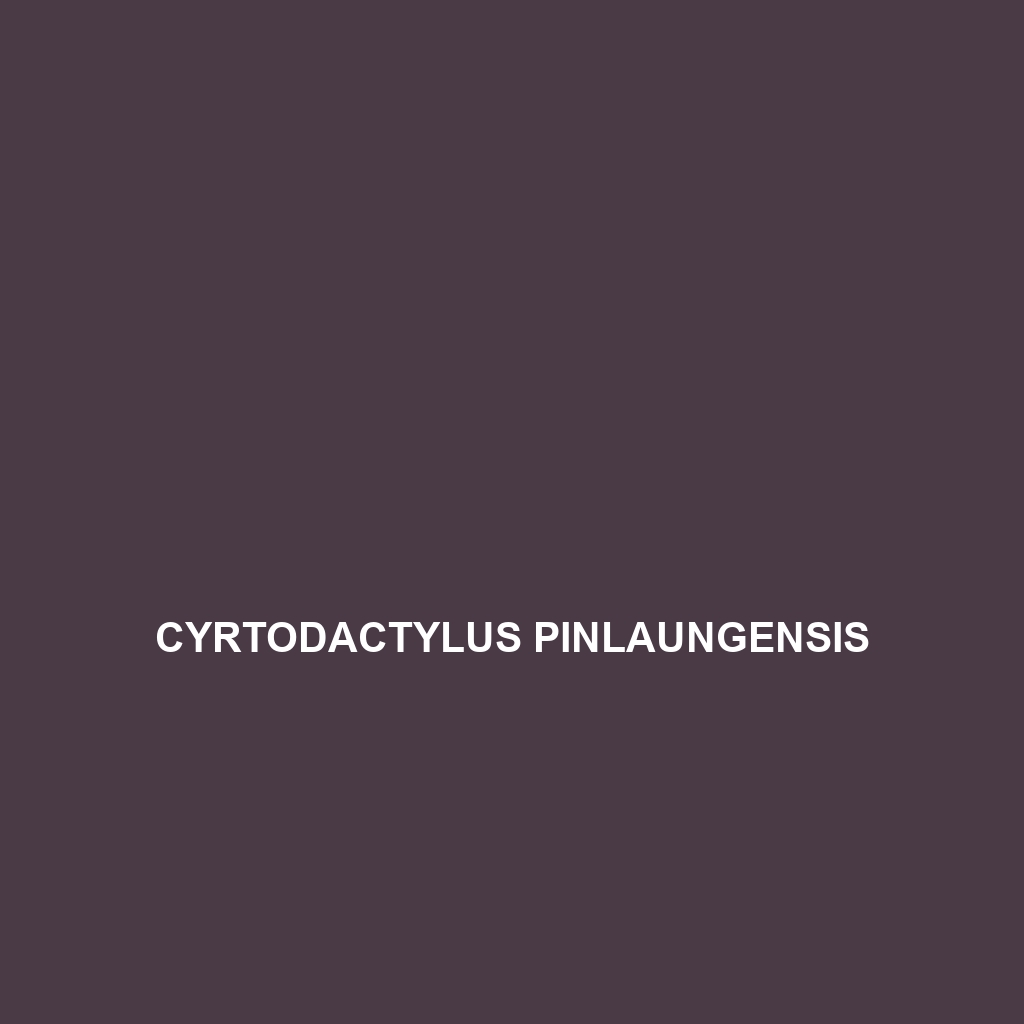Cyrtodactylus phuquocensis
Common Name: Cyrtodactylus phuquocensis
Scientific Name: Cyrtodactylus phuquocensis
Habitat
Cyrtodactylus phuquocensis, commonly known as the Phu Quoc bent-toed gecko, is primarily found in the tropical forests of Phu Quoc Island, located off the southwestern coast of Vietnam. This species thrives in humid, dense vegetation environments, particularly in areas with limestone karst formations where they find ample hiding spots and breeding cavities.
Physical Characteristics
This gecko typically grows to a length of approximately 12 to 15 cm. It features a slender body with a distinctive dorsal pattern that includes light brown or grayish colors, often adorned with darker bands. The limbs are relatively long, and the toes are equipped with adhesive pads, which aid in climbing and gripping surfaces. Its unique coloration provides excellent camouflage against the forest backdrop, enhancing its survival in the wild.
Behavior
Cyrtodactylus phuquocensis is primarily nocturnal, becoming active during the night when it hunts for insects. They exhibit territorial behavior, often seen basking in the foliage during warmer hours to regulate their body temperature. Their ability to quickly retreat into crevices when threatened makes them fascinating subjects for research on defensive strategies in reptiles.
Diet
As insectivores, Cyrtodactylus phuquocensis primarily feeds on a diet consisting of various insects such as crickets, beetles, and moths. Their feeding habits play a crucial role in controlling insect populations within their habitat, making them essential to the ecological balance.
Reproduction
The breeding season for Cyrtodactylus phuquocensis typically occurs during the warm months, from late spring to early summer. Females are known to lay two eggs per clutch, usually in hidden, moist locations within the forest floor to protect them from predators. The eggs incubate for approximately 60 days before hatching, at which point the juvenile geckos are independent and ready to begin their lives.
Conservation Status
Cyrtodactylus phuquocensis is currently classified as vulnerable due to habitat destruction and deforestation resulting from human activity on Phu Quoc Island. Efforts are underway to protect their habitat and promote awareness of their ecological significance.
Interesting Facts
Cyrtodactylus phuquocensis is not well-studied, making this species a subject of interest for herpetologists worldwide. Their adaptability to various microhabitats within tropical forests illustrates the resilience of this unique species against environmental changes.
Role in Ecosystem
As a predator of insects, Cyrtodactylus phuquocensis plays a critical role in maintaining the ecological balance of its habitat. Their presence helps to regulate insect populations, which can otherwise become overwhelming and affect plant health. Additionally, as prey for larger predators, they contribute to the food web dynamics on Phu Quoc Island.
